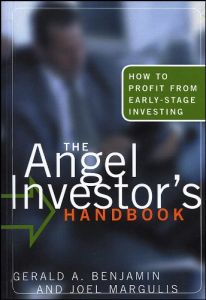Join getAbstract to access the summary!

Join getAbstract to access the summary!
Gerald A. Benjamin and Joel Margulis
The Angel Investor's Handbook
How to Profit from Early-Stage Investing
Bloomberg Press, 2001
What's inside?
Want to be touched by an angel? An angel investor that is...
Recommendation
Gerald A. Benjamin and Joel Margulis tell the current or prospective angel or early-stage investor how to best judge pre-IPO investments. They emphasize matching investors with the right entrepreneurs to create an effective team in which the investor not only provides the seed or early-stage capital but also contributes good advice and contacts. Besides discussing effective strategies, the book includes an extensive directory of top venture forums, angel organizations, publications and Web sites. In addition, any investor will benefit from the thorough rundown of due-diligence points that the authors recommend. While the book is targeted at prospective investors, getAbstract encourages entrepreneurs with start-up companies to use it as a productive guide to making more effective funding pitches, although the companion book for entrepreneurs would probably be more helpful. One caveat: Some ideas are repeated – even with similar wording – from chapter to chapter. But overall this is a solid book, even though the free flows of money it evokes have been arrested somewhat lately.
Summary
About the Authors
Gerald A. Benjamin is a senior managing partner of International Capital Resources, a capital-sourcing firm with 14 offices in North America. He is also senior editor of The Private Equity Review, chairman of the Northern California Venture Forum and executive director of the Private Equity Research Institute. Joel Margulis has written books on a range of subjects and is currently a university lecturer on writing. Both authors recently co-authored Angel Financing, which focuses on raising capital, the flip side of angel investing.




















Comment on this summary